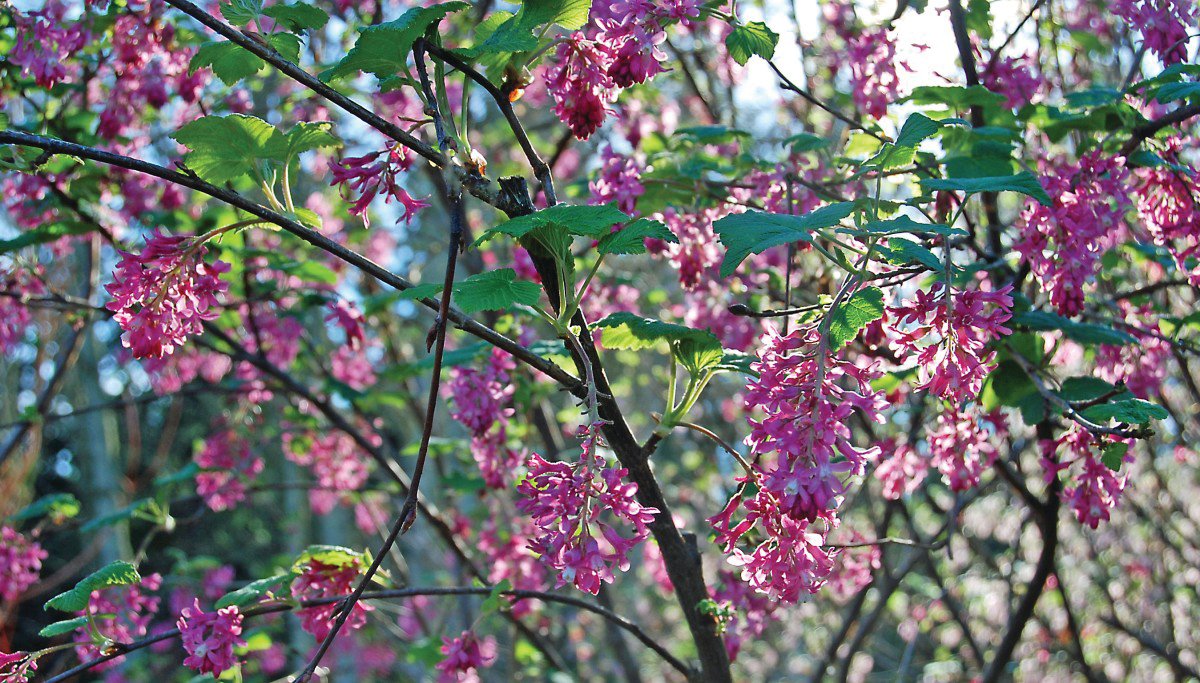It’s always a good time to sing the praises of native plants. April is Native Plant Appreciation Month in the state of Washington — and it has recently been named National Native Plant …
This item is available in full to subscribers.
We have recently launched a new and improved website. To continue reading, you will need to either log into your subscriber account, or purchase a new subscription.
If you had an active account on our previous website, then you have an account here. Simply reset your password to regain access to your account.
If you did not have an account on our previous website, but are a current print subscriber, click here to set up your website account.
Otherwise, click here to view your options for subscribing.
* Having trouble? Call our circulation department at 360-385-2900, or email our support.
Please log in to continue |
|

It’s always a good time to sing the praises of native plants. April is Native Plant Appreciation Month in the state of Washington — and it has recently been named National Native Plant Month across the U.S. So it’s a perfect time to celebrate by adding some natives to our home gardens, small farms, and backyard forests.
Native plants enhance the diversity of foliage, flowers, and berries in the landscape. They provide shelter and food for native pollinators and other wildlife. Natives also require less water, help prevent erosion, sequester carbon from the air, and require no mowing or fertilizing.
The Washington Native Plant Society (www.wnps.org) is an excellent resource for information on gardening with natives, including a list of plant and seed sources. You can also browse local and state-wide events for Native Plant Appreciation Month, including webinars, plant sales, and plant walks.
To add biodiversity in your garden, here are a few plant ideas that are usually available at local nurseries, county Conservation District plant sales, or native plant nurseries. Planting them in clusters helps attract pollinators, and provides nesting materials and foraging efficiency.
Cane Growers are good choices for slopes, borders, or hedgerows. They attract pollinators with colorful flowers and nutritious berries.
Evergreen Huckleberry (Vaccinium ovatum) can grow up to 8 to 10 feet in shady forests, but may stay smaller in part-shade gardens. The pink, urn-shaped flowers attract bees, butterflies, and hummingbirds from spring through mid-summer. The red-dark purple berries feed birds and mammals by fall.
Oregon Grape (Mahonia aquifolium) is an evergreen that produces fragrant, bright yellow blossoms from mid-March through May, then sets clusters of tart, dark berries that resemble bunches of grapes. This tall form of Oregon Grape can grow to 6 to 8 feet high. Plants will tolerate heavy pruning to stimulate growth of new canes. Just cut old or damaged canes to the ground.
Red Flowering Currant (Ribes sanguineum) can grow to 8 to 10 feet tall, and is one of the first deciduous shrubs to bloom in the spring, with racemes of deep pink flowers that attract hummingbirds and other pollinators. By late summer, it produces small blue-black berries. The leaves then turn yellow and orange to add fall color.
Understory Plants also offer wildlife habitat, help with slope retention, and provide ground coverage to resist weed growth. They require little maintenance once established.
Cascade or Low Oregon Grape (Mahonia nervosa) is an adaptable low-growing evergreen, reaching 1 to 2 feet in height and growing in shade or sun. Nectar from its yellow flowers, grown in spikes compared to the clusters of the tall form, are a favorite of our native Anna’s hummingbirds. Small berries form later in the summer, providing food for birds and small mammals.
Western Sword Fern (Polystichum munitum) can grow to 4-foot tall and wide, displaying glossy fronds throughout the year. It is found in shady or part-shade forests, but can also thrive in sunny conditions with adequate water. The smaller Deer Fern (Blechnum spicant) prefers shady, moist conditions, and provides habitat for insects and birds as well as food for deer and other mammals.
You can leave the old fern fronds to decompose in place, or for a neater appearance, cut off the old fronds at the base just as the new growth appears in spring. Both sword and deer ferns are easy to divide and replant; this is best done in the fall.
Salal (Gaultheria shallon), another adaptable evergreen, can grow to about 6-feet tall in sunny coastal areas, but usually stays shorter as an understory plant in shade. Hummingbirds and bees enjoy the pink, urn-shaped flowers in spring, and over the summer, dark, juicy berries provide food for birds and mammals. Salal can spread widely, but it is easy to control by pruning excess growth to the ground. It is resilient to rejuvenation pruning and can be cut to a low form every few years.
If you’d like to see examples of native trees, shrubs, ferns, and wildflowers in different garden settings, consider exploring some nearby native plant demonstration gardens. Two examples are the Kul Kah Han Native Plant Garden at HJ Carroll Park in Chimacum and the Native Plant Garden at Buck Lake County Park in Hansville, near the northern tip of the Kitsap Peninsula. Both are well worth a visit for ideas and inspiration, and a great way to celebrate Native Plant Appreciation Month!
NEW: Beginning April 19, Master Gardeners at the online plant clinic will host live Zoom sessions from 12:30 to 2:30 p.m. Mondays to answer your gardening and landscape questions. To make an online appointment or submit a written question, visit http://jefferson.wsu.edu/plant-clinic.
NEW: The Jefferson County Master Gardener Foundation will hold its online plant sale from April 26 through May 6. Contactless pickup of online orders will be on Saturday, May 15. Check for details at https://jcmgf.org/.
(Barbara Faurot is a Jefferson County Master Gardener and Master Pruner, working with other volunteers who serve as community educators in gardening and environmental stewardship.)